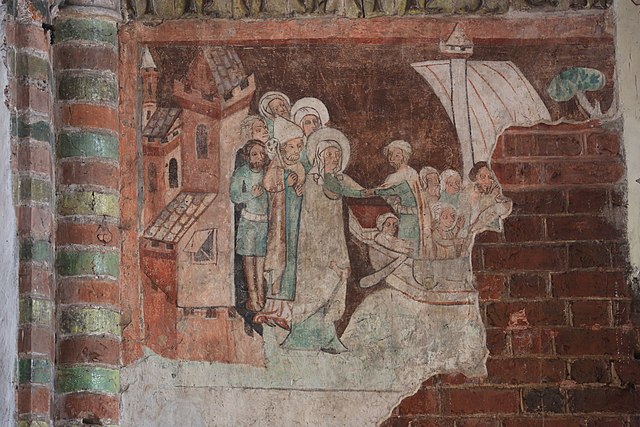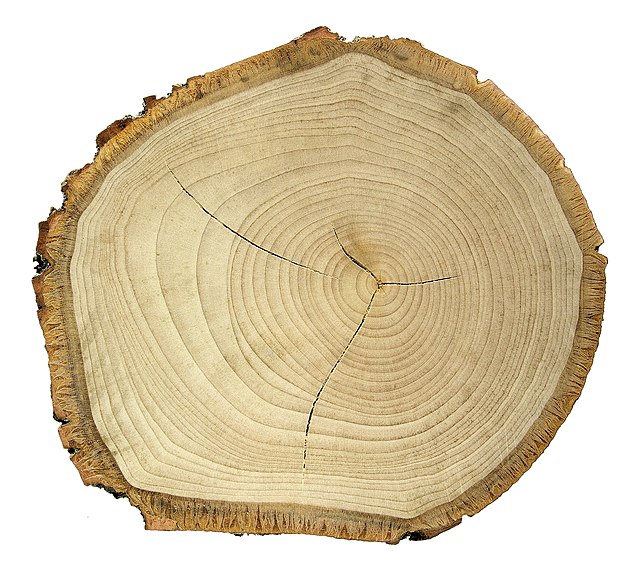Dendrochronology is the scientific method of dating tree rings to the exact year they were formed in a tree. As well as dating them, this can give data for dendroclimatology, the study of climate and atmospheric conditions during different periods in history from the wood of old trees. Dendrochronology derives from the Ancient Greek dendron, meaning "tree", khronos, meaning "time", and -logia, "the study of".
The growth rings of a tree at Bristol Zoo, England. Each ring represents one year; the outside rings, near the bark, are the youngest
A "tree cookie" cross-section of a Coast Douglas-fir tree displayed in the Royal Ontario Museum. The tree was over 500 years old when it was cut down in British Columbia in the 1890s. The markings indicating historical events were added in the 1920s.
Drill for dendrochronology sampling and growth ring counting
Silver lime cross section showing annual rings.
Chronological dating, or simply dating, is the process of attributing to an object or event a date in the past, allowing such object or event to be located in a previously established chronology. This usually requires what is commonly known as a "dating method". Several dating methods exist, depending on different criteria and techniques, and some very well known examples of disciplines using such techniques are, for example, history, archaeology, geology, paleontology, astronomy and even forensic science, since in the latter it is sometimes necessary to investigate the moment in the past during which the death of a cadaver occurred. These methods are typically identified as absolute, which involves a specified date or date range, or relative, which refers to dating which places artifacts or events on a timeline relative to other events and/or artifacts. Other markers can help place an artifact or event in a chronology, such as nearby writings and stratigraphic markers.

Brick adornments in Saint James Church of Toruń, wherein Thermoluminescence was used to provide an absolute date for its construction.





